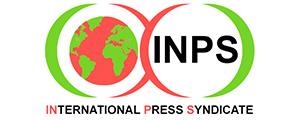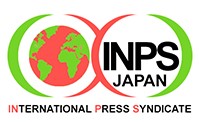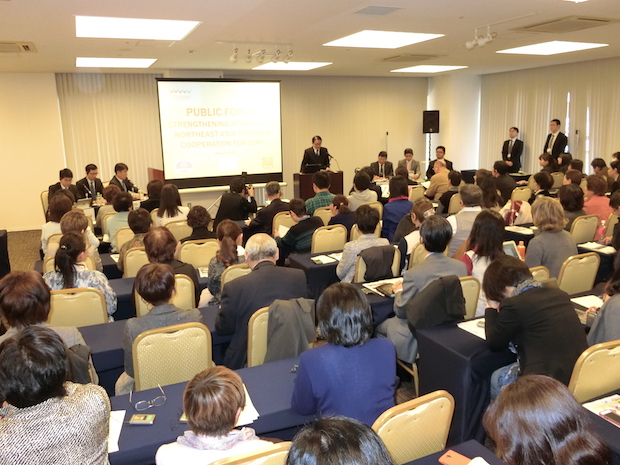By Jamshed Baruah | IDN-InDepthNews Analysis
BERLIN | SENDAI (IDN) – Tearing down ideological barriers and overcoming historical animosities, civil society organisations from Japan, China and the Republic of Korea participated in a landmark trilateral forum during the Third UN World Conference on Disaster Risk Reduction (WCDRR).
The conference, held from March 14 to 18 in Sendai – the centre of Japan’s Tohoku region that bore the brunt of the 2011 earthquake and tsunami leading to the Fukushima nuclear power plant catastrophe – agreed on a new framework for the next 15 years (2015-2030) to reduce the risk of disasters that kill and destroy livelihoods.
The trilateral forum was one of the major events, organised by Soka Gakkai International (SGI), a lay Buddhist organisation based in Tokyo, during the WCDRR. It provided a platform for fostering people-to-people cooperation in Northeast Asia to reduce risks of disasters. Their total economic impact worldwide amounted to 1.4 trillion dollars between 2005 and 2014.
According to observers, the forum initiated a powerful move towards trilateral cooperation that could serve as a model beyond regional boundaries.
Explaining the rationale behind the March 16 forum, Feng Chen from the Seoul-based Trilateral Cooperation Secretariat (TCS), said: “The three countries . . . continue to suffer disproportionally from various types of disasters caused by natural hazards.” As neighbouring countries in the region, Japan, China and the ROK should work together to reduce the risk of “dreadful disasters”, he said and affirmed the commitment of TCS to do so.
The need for cooperation between the three Northeast Asian countries was stressed also by Haoming Huang, vice chairman and executive director of the non-profit 126 member organisation operating nationwide, the China Association for NGO Cooperation (CANGO), which was founded in 1992, and enjoys special consultative status with the Economic and Social Council (ECOSOC) of the United Nations.
“CANGO’s mission is to create a strong, empowered network of Chinese NGOs to address poverty alleviation, environmental protection and social development, particularly in China’s poor, remote and minority-inhabited areas,” according to Haoming Huang.
Another participant in the Forum was Young-Jin Park, the current Secretary General of the Korean Disaster Relief Association, The Hope Bridge. He said it was the nation’s first relief organization founded voluntarily by key figures in the media and other parts of society, without any set religion or ideology, in 1961, when there was no culture of emergency relief and sharing in Korea.
With a half-century of emergency relief work and specialized activities, the organization has separated its emergency relief efforts into domestic and overseas efforts, and is providing effective relief according to the type of disaster, region and target.
Aoi Horiuchi, the Secretary General of the Japan CSO Coalition 2015 Committee in preparation for the 3rd World Conference for Disaster Risk Reduction (WCDRR), also participated in the forum. He has since 2012 been a member of the Research and Proposal Group of the non-profit, non-partisan networking Japan NGO Center for International Cooperation (JANIC) founded in 1987. He is involved in coordination between the NGO Conferences and the Ministry of Foreign Affairs, as well as the advocacies of the Millennium Development Goals.
Daisuke Namaki of the Next Stage Tohoku Coop was another participant in the trilateral forum. Born in Osaka in 1973, he had experienced the Great Hanshin Earthquake of 1995 in Kobe, Japan. Since 2002 he has been engaged in a government policy-based business of accommodating intern trainees from Asian countries and introducing them to Japanese companies. Since 2006 he has served as Representative Director of the Next Stage Tohoku Coop.
Reflecting the valour of the people of the region, the Tohoku Soka Gakkai organised a panel exhibition, ‘The Light of Humanity’, featuring 22 individuals who are struggling to overcome the tragedy of the Great East Japan Earthquake of 2011 and making efforts toward restoration.
Commending the trilateral forum, SGI Executive Director for Peace Affairs Hirotsugu Terasaki said it had manifested “highly fulfilling exchanges of opinion . . . about the various trends and characteristics that are emerging within civil society” in the three countries. “This has reinforced my conviction that a more resilient community can be forged when civil societies offer complimentary support towards one another,” Terasaki said.
Referring to the Sustainable Development Goals, which are scheduled to be endorsed in September, Terasaki pointed out that SGI President Daisaku Ikeda had urged in his peace proposal 2015 China, South Korea and Japan to “join together to create a regional model that will embody best practices that can be shared with the world, including those relating to the development of human talent”.
“It goes without saying that an active flow of people as well as cultural and economic exchange is already widespread among these three countries, which hold between them a population of approximately 1.5 billion. On that basis, trilateral cooperation regarding specific challenges, including disaster prevention, will not only contribute to the security and stability of this region, but also resonate positively within the international community,” said Terasaki.
More specifically, he added, the kind of trilateral cooperation concerning disaster prevention, as had been discussed in the trilateral forum, would not only be beneficial in terms of simply dealing with future disaster response, but could certainly, in a more broader sense, make a contribution toward setting a clear example across the entire global society, he added.
SGI also organised together with the ACT Alliance and Japan Religion Coordinating Project for Disaster Relief (JRPD) a symposium titled ‘Community based DRR (disaster risk reduction) from a faith-based perspective – sharing best practices’. This was a follow-up of a side event at the 6th Asian Ministerial Conference for Disaster Risk Reduction (AMCDRR) held in June 2014 in Bangkok, Thailand.
ACT Alliance’s general secretary John Nduna said that the role of faith-based organizations (FBOs) in disaster risk reduction is not always recognized and that international frameworks such as the Hyogo Framework for Action (HFA) only have impact when they benefit the people at the grassroots level.
Nobuyuki Asai, chair of the Soka Gakkai Youth Peace Conference, spoke on the capacity of FBOs to mobilize existing community networks and to protect the vulnerable in times of emergency.
On March 16, as an outcome document of the symposium, 13 FBOs issued a statement in which they called on governments to recognize the unique role of Local Faith Communities (LFCS) and FBOs and to give priority to the engagement and collaboration of both in the implementation of the post-2015 framework on DRR.
Two days later, Kimiaki Kawai, Program Director of Peace Affairs for SGI, gave a presentation at the WCDRR’s IGNITE Stage on Soka Gakkai’s relief efforts in Tohoku following the Great East Japan Earthquake. He highlighted the ability of FBOs to utilize their existing networks of communication and their local facilities in disaster response. He emphasized that the strengths and resources of FBOs could complement those of other DRR stakeholders.
The importance of FBOs was underlined by the Pew Research Center in 2012, when it found that faith, in all its forms, constitutes a natural and important element in the lives of billions of people with over 84 percent of the world identifying with a religious group. Faith drives people to take action.
Kimiaki said, as discussed during this WCDRR, there are numerous good examples of the added value of Local Faith Communities and Faith-Based Organisations in responding to disasters all over the world, including the Ebola crisis in West Africa, conflict in South Sudan and Central African Republic, the Great East Japan Earth Quake, Cyclone Pam in Vanuatu, and the flooding in southeast Asia. [IDN-InDepthNews – March 31, 2015]


